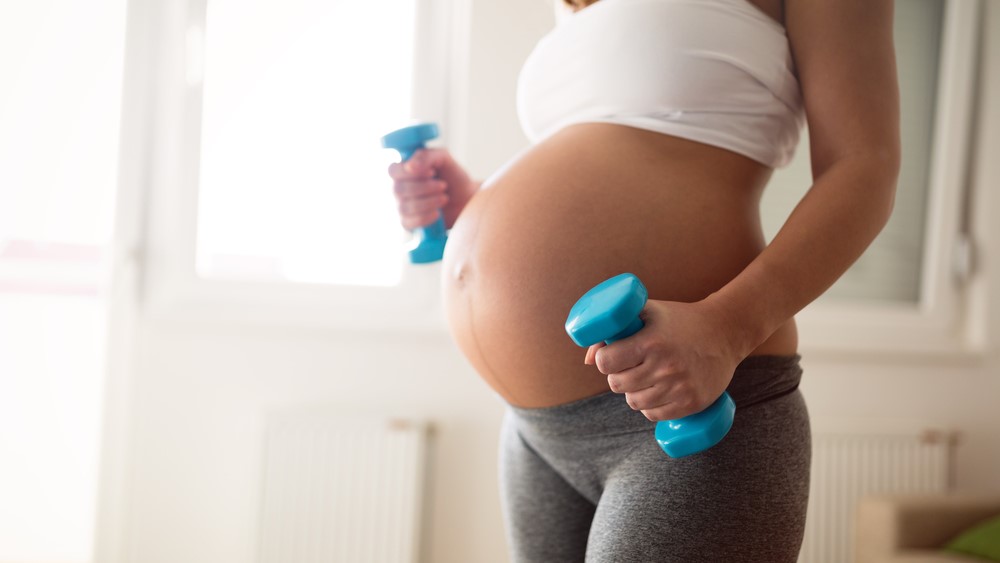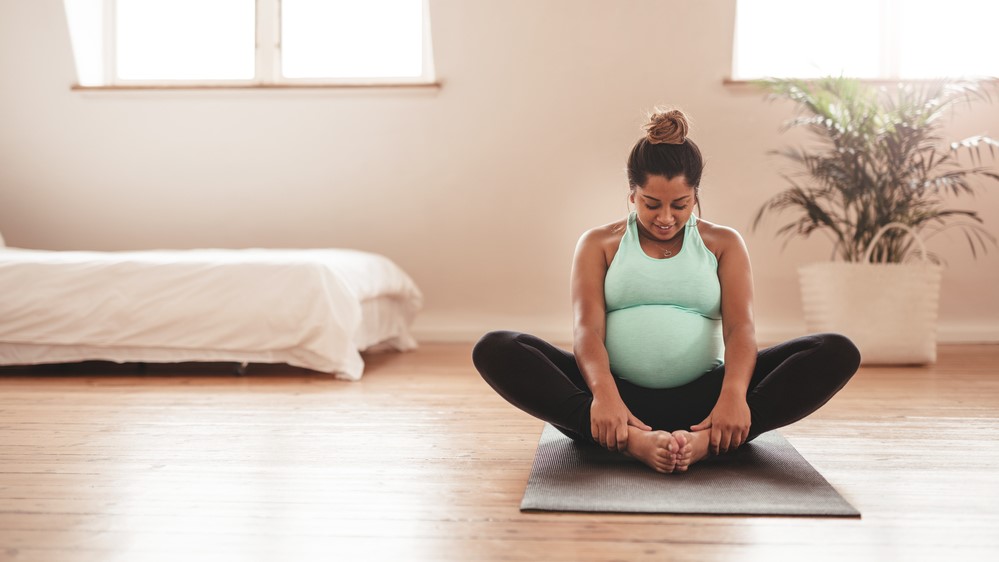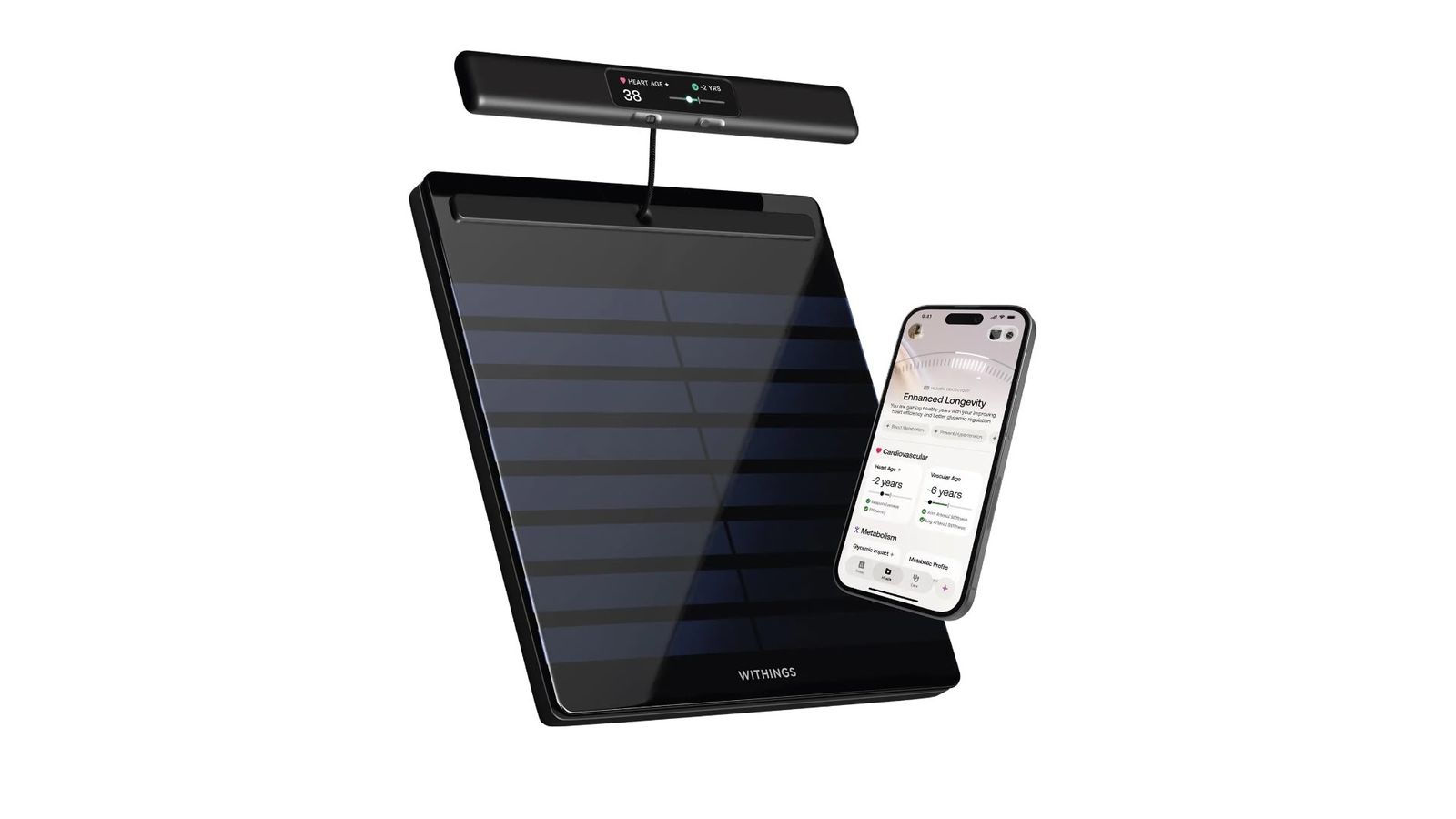
Wondering what exercise you can and can’t do during pregnancy? If your pregnancy is a low risk then experts recommend regular exercise throughout gestation. In fact, the U.S. Department of Health and Human Services Physical Activity Guidelines for Americans recommends at least 150 minutes of moderate-intensity aerobic activity per week during pregnancy and the American College of Obstetricians and Gynecologists suggests the following as possible workouts: walking, stationary cycling, dancing, resistance training, stretching and water aerobics.
Below, we speak to an expert on the exercises to do and those to avoid when pregnant. If you’re unsure about exercising during pregnancy, it’s important to check with your doctor or midwife before starting, especially if you’re trying a form of exercise that you didn’t do pre-pregnancy.
Be hormone aware
Remaining active during pregnancy is great for maternal health. But shelve some of your high-impact moves. Pre and postnatal fitness expert Julie Baird from Our Fit Family Life explains, “In my opinion, it’s best to avoid high impact exercises during pregnancy, even during the first trimester because of relaxin levels, which are typically highest at the beginning of the pregnancy. Relaxin is a hormone that helps the pelvis adjust and widen for the baby to descend the birth canal. It also has the impact of relaxing all your joints, muscles, tendons, and tissues during the entire pregnancy.”
So, performing an intense exercise regime with super-stretchy joints and ligaments can lead to some pregnancy problems. Julie warns, “Relaxin combined with high impact activities can lead to lots of unfortunate outcomes such as back pain, knee pain, pelvic girdle issues, stress incontinence or other pelvic floor dysfunctions.”
Chill your cardio
Perhaps you’re used to HIIT workouts, but it's better to slow things down a little during pregnancy. To get your heart rate up but without the impact, Julie suggests taking it down a notch: “Low impact cardio such as power walking, swimming, elliptical, stationary bike can be great HIIT substitute. Avoid getting out of breath and use the talk test: you should always be able to carry an easy conversation while exercising.”
Check out the best exercise bikes for home workouts, and the best running shoes to wear on those power walks.

Adjust your jumping
You might usually embrace high-impact circuits but to take out the impact element, Julie suggests tweaking your usual moves: “Avoid any jumping or plyometric moves and replace them with a slower and lower impact version of the move. Instead of jumping jacks, take out the jump, and do alternating step-outs while coordinating the arms.”
Get instant access to breaking news, the hottest reviews, great deals and helpful tips.
Be bump aware
Trying to perform a plank or rounds of push-ups is going to become tricky as your pregnancy progresses. You can still get the benefits, but Julie recommends adapting your technique to accommodate your bump: “Avoid any front load-bearing exercises such as front planks or push-ups and replace them with an inclined version of the exercise. For example, instead of a regular push-up, perform wall push-ups.”

Focus on abdominal breathing
While crunches and sit-ups aren’t ideal during pregnancy, core exercises can continue with a focus on abdominal breathing. The American College of Obstetricians and Gynecologists suggests that slowing things down with yoga or Pilates can be beneficial: “Yoga reduces stress, improves flexibility, and encourages stretching and focused breathing. Prenatal yoga and Pilates classes designed for pregnant women teach modified poses that accommodate a pregnant woman’s shifting balance. You should avoid poses that require you to be still or lie on your back for long periods.”
Don't ditch the weights, but modify your workouts
Weight training is an option for most expectant women, especially for those who have been doing it pre-pregnancy. But Julie has some tips: “I would recommend sticking to light or moderate weights in the 10 to 16 rep range to avoid overloading loosened joints. Weight training can be beneficial as long as form and breathing strategies remain a priority.
Any lifting increases the intra-abdominal pressure and can potentially place harmful downward pressure on the pelvic floor or behind the ab midline. Managing this pressure is key to prevent injuries and make the most of the workout. The goal should be to maintain core function, fitness and wellbeing – not going for a new personal best or peak performance!”
Here are a few examples:
- Sumo squats with light dumbbells in each hand
- Standing or sitting bicep curls with a light dumbbell
- Standing or sitting lateral raises with light dumbbells
If you have any questions, it's a good idea to speak to your doctor, midwife, or personal trainer.
Working out from home? Here are the best resistance bands, the best adjustable dumbbells, and the best yoga mats to level up your routine.
Jo is a lifestyle and features writer based in the UK who mainly covers health and parenting, although she also does the odd celebrity interview to keep her showbiz credentials in good condition. Her work has appeared in Grazia, Mother&Baby, Good Housekeeping and The Daily Telegraph among others. When not at her desk, Jo bakes lots of brownies; tries to keep up with her active young sons; and is attempting to learn how to play tennis.

